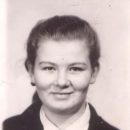World War Two
Ronald Leedham: Buzz Bombs and Doodlebugs
Ronald Leedham was born in 1929 in India. His family moved back to England in 1931after Ronald contracted Polio. Ronald spent some years in Hospital as a young child after contracting Diptheria. When he was six he returned home to Catford for a short while to live with his father, eventually ending up living in ‘homes for crippled children’ run by the Shaftesbury Society, until he was sixteen.
More from
Ronald Leedham
- Boys and girls together
- Sheltering in the Church
- Geography
- Awful Sundays
- Suitcases
- Difficult subject
- The Glow over London
- The Walk to Church on Sunday
- Oliver Twist
- Lead Soldiers
- Cricket at Sevenoaks
- No talking
- Visiting every six weeks
- Beatings
- Shut Away and Tipped Out
- I Knew Nothing About Life
- Greyness
- War starts
- Certificates
- Shame
- Explosives
- Incendiaries in the park
- Dogfight
- A Miserable Time
- Parlour Songs
- Mum
- Home
- Oliver Twist and donk
- Visits
- Shelter
- ‘Mummy coming’
Here Ron describes the effects of relentless bombings on school life.
Transcript
I can remember the first one I saw. We heard some during the night,there were these noises during the night and we were talking about it. 'What was that one that went over during the night? 'and we all thought, oh it was a bomber with engine trouble cos they didn’t sound right and it went on, there were two or three of them during the night and when, the next day it was cloudy and I can remember being dressed in the dormitory, trying to get dressed and looking out of the window and I saw this funny thing go from east to west. Now buzz bombs went from south to north, every time, bang, band, bang, back and forth. But this one was going from east to west and it was a funny looking thing compared with all the aircraft and it was making this funny noise and it was quite low. Anyway it disappeared back into the clouds and, we talked about it over breakfast and there were more of these noises went over, we couldn’t make it out at all. Then, of course, when the sky cleared,we could see what was happening. There were these… things like a torpedo with wings and another torpedo on top of it, with the motor that made this band, bang, bang, bang, bang noise as it went along. And it really shook the country, we weren’t expecting it, because there was no defence against them at all at first.Then in a matter of days, the countryside changed. They put up barrage balloons everywhere. I’ve never seen so many barrage balloons in all my life. There were hundreds and hundreds and hundreds of barrage balloons. To the north of the house, the house, between the house and Sevenoaks and from Sevenoaks onwards, it was a big balloon barrage. God knows where they got them all from. There were thousands and thousands of them and between the barrage balloons and the guns, you had a passage where the aircraft patrolled up and down, they had it in stages, they kept on changing it but at this particular time. And we used to see these blooming flying bombs, doodlebugs, buzz bombs, whatever you like to call them and they used to fly into these barrage balloons and sometimes they’d hit a wire and go down the wire and explode at the bottom and probably killed all the WAAF aircrew down there (WAAF, Women's Auxiliary Air Force - later became Women's Royal Air Force) but there were other times when they maybe hit a balloon and the cable would break and the balloon would shoot up in the air and there are other times when I’ve seen them go straight through the cables, not touch one of them. Honestly, how they got through it? It must have been like a fence, but they went straight through. I couldn’t believe it. What was reason for the barrage balloons? Well they were normally put up to stop aircraft flying too low. Because you’ve got a balloon up there and you’ve got a great big thick cable and aircraft don’t like hitting cables and so what they did is, they put all these things up. The flying bombs, I don’t think they were more than a thousand feet up, they were quite low and so if you had a balloon up there, you had a lot of balloons and a lot of cables coming down,the bombs would hit the cables and stop them going into London. That only worked to a degree. They didn’t, they weren’t fool-proof. But then, of course, all the time there were the anti-aircraft guns firing at them.
The whole countryside went berserk. More so than I ever saw it in the Blitz. It was an unbelievable period. I can remember there were the times when they were supposed to have come over and they’d run out of fuel and when the engines stopped, the bomb came down, bang, which is the thing you usually see on the television. What they don’t tell you is that quite often, for some reason or other, when the engine cuts out, they didn’t come down, they went on gliding. And they were the dangerous ones. I’ve seen them coming, when they were getting very low, cos they were gliding, I’ve seen them cut through the tops of trees in the park and go over the house; that was a bit frightening. At mealtimes we used to have one of the older boys would stand outside the dining room, looking towards the south and if he saw one of these things gliding across the trees, he used to give us a yell and we’d have to get under the table… You know, it changed our lives completely.
Explore more
Explore stories by theme or view the timeline of significant events in education for disabled people
![How Was School? [logo]](https://howwasschool.allfie.org.uk/wp-content/themes/hws-base-theme/assets/img/allfie-logo-original.svg)



